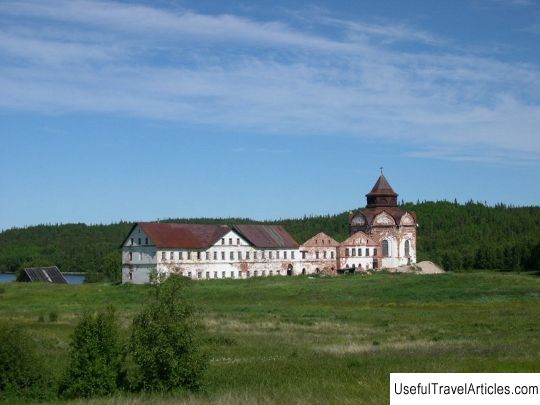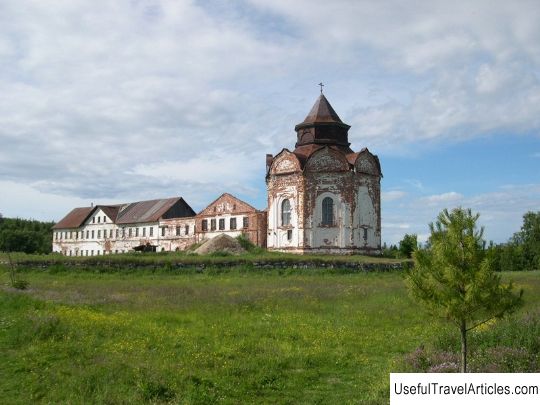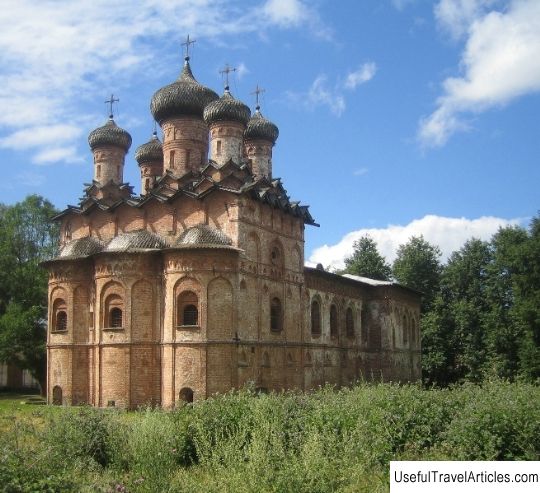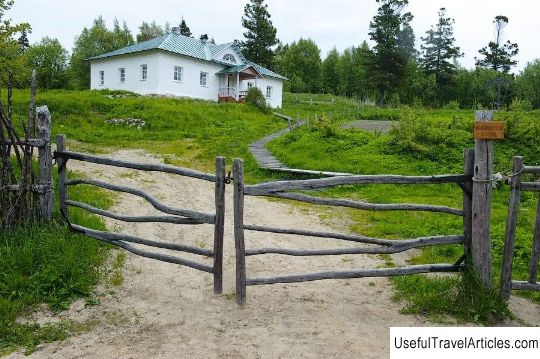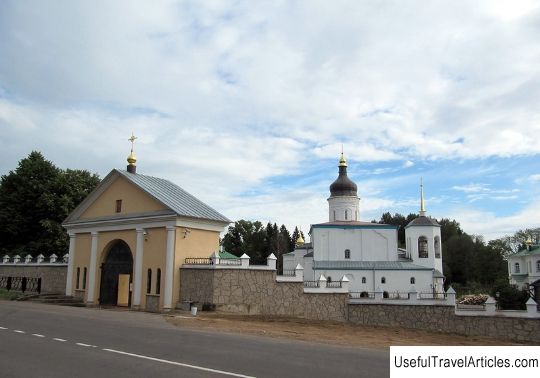Eleazarova Pustyn description and photos - Russia - North-West: Solovetsky Islands
Rating: 8,3/10 (466 votes) 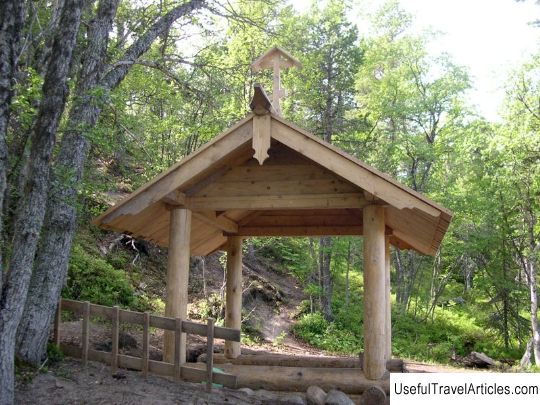
Eleazarova desert description and photos - Russia - Northwest: Solovetsky Islands. Detailed information about the attraction. Description, photos and a map showing the nearest significant objects. Photo and descriptionAt the Solovetsky Monastery there is the Eleazar's Monastery, which was named after the Monk Eleazar of Anzersky, the famous founder of the Holy Trinity Skete. Eleazar was born in the small town of Kozelsk into the Sevryukin merchant family. In accordance with the blessing of his parents, he went to the Solovetsky Monastery, where he received tonsure from the Monk Igumen Irinarch. Immediately upon arrival at the monastery, Eleazar discovered in himself an amazing ability for artistic craft and began to actively study woodcarving, and later he himself began to take part in decorating the Transfiguration Church. In 1612, Eleazar left the monastery and went to the Anzersky island, where he began to lead a hermitic lifestyle, all the while being in thought and prayer. Eleazar settled on a small mountain, located right next to the lake, which is now called the Bolshoi Eleazarov. At this place, he put up a cross and built a small cell. In order to feed on the devastated island, he carved small wooden bowls for himself and left them next to the pier. When people sailed past the island, they took their bowls, and in return they left food and supplies. In 1616, Eleazar was tonsured into the schema. The monk lived on the island for four years, and then moved to the coastal zone of the sea bay, which soon received the name Trinity. Pilgrims began to come to Eleazar, as did he, seeking solitude and silence. It is known that the monk throughout his life always led the ancient order of the wilderness. Soon the construction of the Holy Trinity Skete began. It is known that that throughout his life the Monk Eleazar worked on book writing - he not only compiled, but also rewrote several books of the Flower Garden, which included old and, to a greater extent, forgotten stories. In addition, the monk belongs to the interpretation of the rite of the monastic cell rule. Eleazar's hermitage was forgotten for a long period of time, and only at the beginning of the 19th century hieromonk Joseph found a cross at the place of residence of Eleazar. During 1825, a small wooden chapel was erected in honor of the Monk Eleazar of Anzersk, in the room of which the cassock and the Psalter belonging to this saint were kept. Today there is information about several icons that were once in the chapel: the icon of the appearance of the Mother of God to the Monk Job, the icon of St. Philip with the Monks Irinarchus and Eleazar and the icon of the apparition of the Most Holy Theotokos to the Monk Saint Eleazar. Starting from the middle of the 19th century, an ascetic named Theodore lived at the place of the former residence of Eleazar. During the time of the Solovetsky camp in the building of Eleazar the chapel was housed by a picket of guards. In those days, the deserts were ravaged and abandoned for many years. In 1995, a miracle happened: the Solovetsky detachment of the Arctic naval expedition surveyed the places where the deserts were previously located. During 1996-1998, research and archaeological work was carried out on this territory, during which the foundation of the cell was completely cleared. From the ancient Eleazar Chapel, only the dilapidated door and the initial crown of the log house have survived to our time. At the moment, the location of the chapel is marked with a wooden cross. An important fact is the presence on Anzer Island, between the Holy Trinity Skete and the Trinity Bay, a holy spring located very close to the skete. Monastic monks carefully preserve this spring, over which there is a log house and a gazebo, and water from the spring flows through wooden pipes. Not far from the source, there is a large worship cross, on which there is an inscription that it was erected under the builder Parmen, as well as with the participation of Hieromonk Ephraim on October 24, 1917. In the days when the Solovetsky camp existed, large water carriers took spring water for prisoners to drink. Even today, on the old dilapidated boards in the gazebo, you can see messages and all sorts of murals of prisoners of the death camp.    We also recommend reading Palazzo Trinci in Foligno (Palazzo Trinci) description and photos - Italy: Umbria Topic: Eleazarova Pustyn description and photos - Russia - North-West: Solovetsky Islands. |
